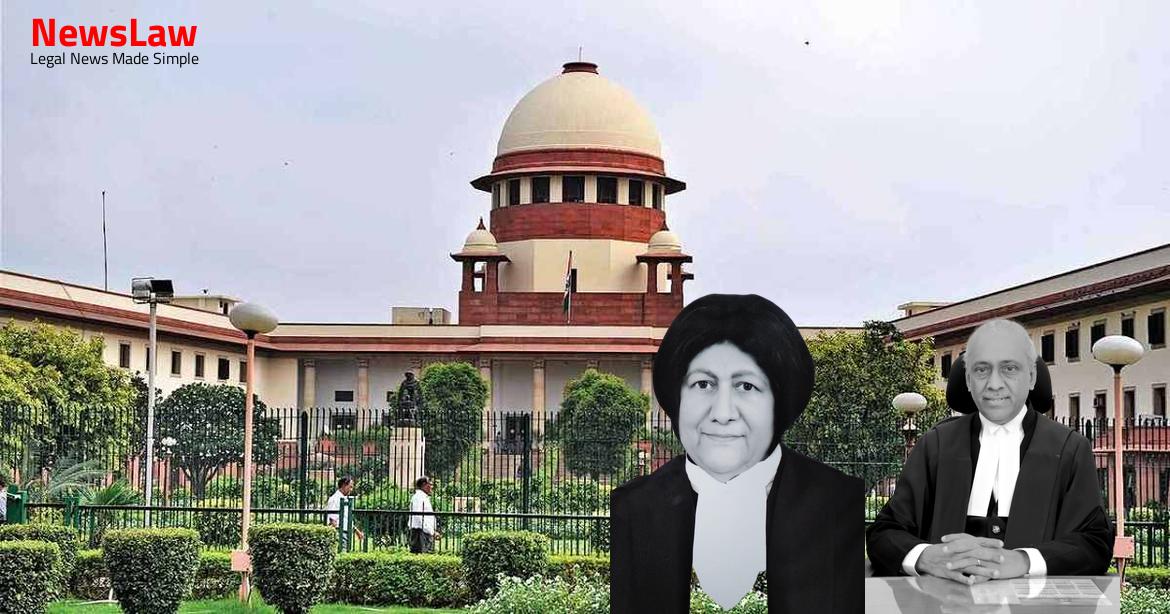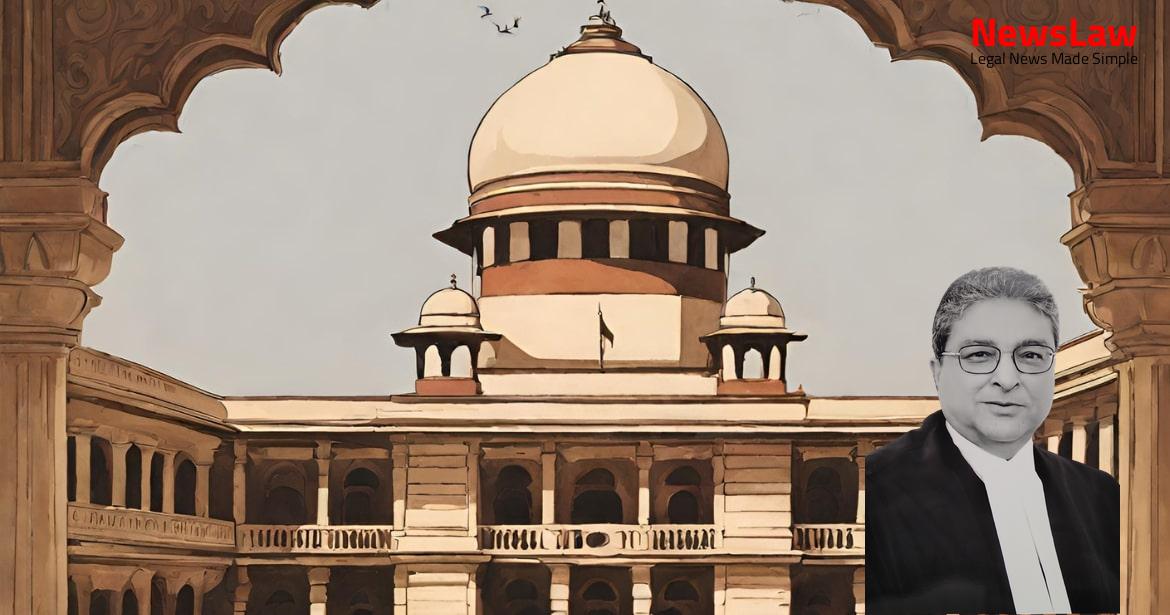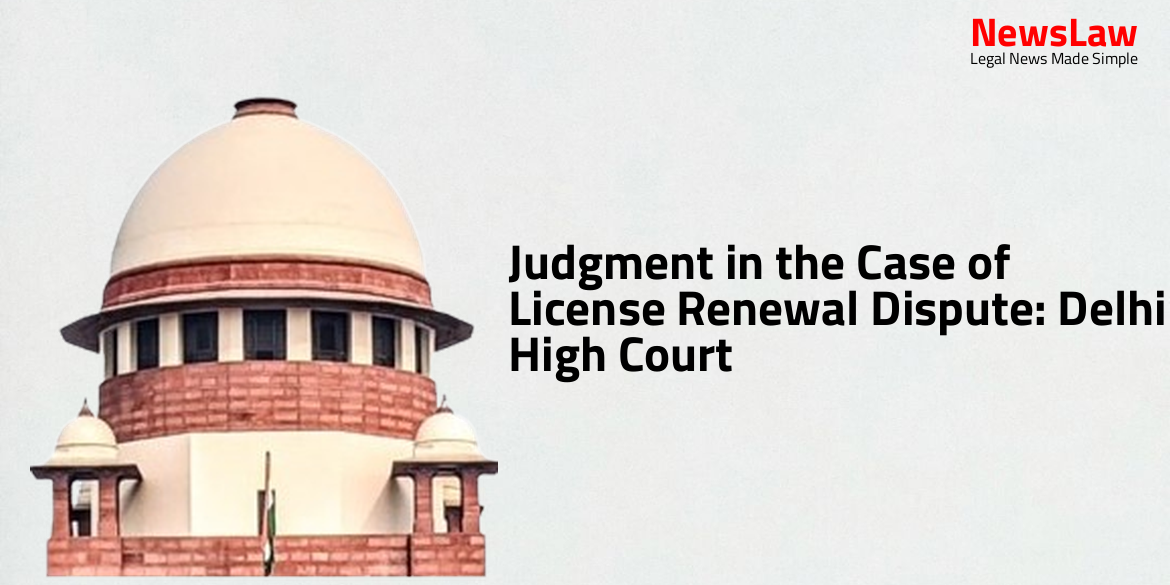Delve into the intricate legal analysis of a recent case focusing on the discretionary power of courts in insolvency proceedings. The case sheds light on the subtle distinctions in interpreting laws related to company revival and value maximization. Follow along to understand the implications of court judgments on the insolvency resolution process.
Facts
- APTEL allowed the appeal on November 3, 2016, directing MERC to allow the actual cost of coal purchased for Unit-1.
- The Appellant claims Rs. 1,730 Crores is due as per the APTEL order.
- Appellant filed an application in December 2016 before MERC for implementation of APTEL’s directions.
- Appellant filed a Miscellaneous Application in February 2020 seeking stay of proceedings under Section 7 of the IBC.
- Appellant commenced supplying power to RIL in April 2014 under an approved Power Purchase Agreement.
- Adjudicating Authority dismissed Appellant’s application in January 2021, refusing to stay CIRP initiated against Appellant.
- Respondent Axis Bank filed an application in January 2020 for initiation of CIRP against the Appellant.
- Appellant is short of funds and unable to implement APTEL’s directions due to pending appeal.
- Implementation of APTEL’s orders would help clear all outstanding liabilities of the Appellant.
- Appellant filed an application in January 2016 before MERC for truing up Aggregate Revenue Requirement and tariff determination.
- Appellant was allowed to expand power plant capacity by adding a second 300 MW unit.
- Cabinet Committee on Economic Affairs amended the New Coal Distribution Policy in June 2013.
- MERC approved a Power Procurement Agreement between Appellant and RIL in February 2013.
- MERC disposed of a case in June 2016 disallowing a portion of actual fuel costs claimed by Appellant and capping tariff for subsequent years.
- MERC granted approval to RIL to procure power from Appellant’s Unit 1 in July 2013.
- Standing Linkage Committee approved Appellant’s application for conversion of Unit 1 in February 2014.
- NCLAT’s judgment dated March 2, 2021, refused to stay CIRP proceedings initiated by Axis Bank against the Appellant.
- The NCLAT examined the case and passed the judgment.
- The NCLAT’s decision was based on various factors.
- The NCLAT’s order was a culmination of thorough assessment.
Also Read: Analysis of Financial Statements as Acknowledgment in Limitation Act Case
Arguments
- Mr. Gupta argued that Section 7(5)(a) of the IBC does not mandate the NCLT to admit an application in every case where there is a debt, as the use of ‘may’ indicates discretion.
- The discretionary power under Section 7(5)(a) of the IBC allows NCLT to reject an application, even in the presence of a debt, for reasons deemed fit to achieve the objective of company revival and value maximization.
- Mr. Gupta cited Rule 11 of the National Company Law Tribunal Rules, 2016 to support the argument that the power to admit a CIRP application is discretionary.
- The argument drew an analogy between Section 7(5)(a) and Section 10(4) of the IBC to highlight the discretionary nature of the provisions.
- Mr. Gupta asserted that the primary objective of the IBC is company revival, and the Appellant’s situation was not its fault but a result of actions by statutory authorities.
- The advocate stressed that the NCLT has the discretion to defer the hearing of a petition under Section 7 of the IBC, especially when there are favorable orders that could help the Corporate Debtor liquidate its debt.
- The arguments put forth by Mr. Gupta were vehemently opposed by Mr. Mehta, who underlined that the Appellant had defaulted in payment to the Financial Creditor, justifying the initiation of proceedings under Section 7(5) of the IBC.
- Mr. Mehta argued that in this case, there was no dispute that the Appellant had defaulted in payment of its dues to the Respondent Financial Creditor.
- Mr. Mehta relied on the judgment in Innoventive Industries Ltd. v. ICICI Bank and Another to emphasize the objective of the IBC for expeditious insolvency resolution.
- The total debt owed by the Appellant to the Respondent Financial Creditor was approximately Rs. 2727 Crores.
- Mr. Mehta argued that the Appellant has attempted to delay the insolvency proceedings despite non-disputed default findings by NCLT and NCLAT.
- Mr. Mehta noted the repeated listing of the case without effective hearing after the application rejection on 29 January 2021.
- The objective of the IBC is to promote a time-bound insolvency resolution framework for economic growth and development.
- Referring to sub-section (4) of Section 7 of the IBC, the debt due from the Appellant to the Respondent Financial Creditor was approximately Rs. 553 Crores.
- Mr. Mehta asserted that the Adjudicating Authority (NCLT) is mandated to ascertain the existence of default within 14 days of receipt of the application.
Also Read: Interpretation of Corporate Guarantor under IBC
Analysis
- Section 7(5)(a) of the IBC confers discretionary power on the Adjudicating Authority (NCLT) to admit an application of a Financial Creditor for initiation of CIRP.
- The Adjudicating Authority may admit the application of the Financial Creditor if the Award/Decretal amount is incapable of realization.
- There is no fixed time limit within which an application under Section 7 of the IBC has to be admitted.
- The expression ‘may admit’ confers discretion to admit.
- The Appellate Tribunal (NCLAT) affirmed the finding of the Adjudicating Authority (NCLT) that the Adjudicating Authority was only required to see whether there had been a debt, and the Corporate Debtor had defaulted in making the repayments.
- The IBC is intended to consolidate and amend the laws to reorganize Corporate Debtors and resolve insolvency in a time-bound manner.
- The timeline for initiation of CIRP starts ticking from the date of admission of the application and not from the date of filing.
- The judgment in Swiss Ribbons does not address the question of whether Section 7(5)(a) of the IBC is mandatory or discretionary.
- The objective of the IBC is to maximize the value of assets, promote entrepreneurship, and balance stakeholders’ interests.
- Financial Creditors and Operational Creditors have different natures, leading to different provisions in the IBC for initiating CIRP.
- Legislature has consciously differentiated between Financial Creditors and Operational Creditors, as there is an innate difference between them.
- The Adjudicating Authority has discretion to admit the application of a Financial Creditor based on various factors.
- Section 154(1) of the Code of Criminal Procedure 1973 mandates the registration of an FIR upon receipt of information about a cognizable offence.
- If the information does not disclose a cognizable offence, a preliminary enquiry may be conducted, and if a cognizable offence is revealed, the FIR must be registered.
- The Insolvency and Bankruptcy framework aims to assess the viability of an enterprise early on and ensure a time-bound insolvency resolution process.
- Legislative intent is inferred based on the use of ‘shall’ or ‘may’ in the law.
- Interpretation of ‘may’ as ‘shall’ depends on the context of the case.
- The Adjudicating Authority (NCLT) emphasized timely resolution of Corporate Debtors under the IBC without delays.
- The Adjudicating Authority and the Appellate Tribunal erred in holding that the existence of a debt and default by the Corporate Debtor automatically necessitated admission of the petition under Section 7 of the IBC.
- The Adjudicating Authority failed to consider the Appellant’s assertion that it was entitled to recover Rs. 1,730 Crores as per an order from APTEL, dismissing such disputes as inconsequential.
- The Adjudicating Authority’s dismissal of disputes between the Appellant and the recipient of electricity or Electricity Regulatory Commission as inconsequential was unjustified.
Also Read: Quashing of FIR and Charge-sheet: Legal Analysis
Decision
- The impugned orders dated 29 January 2021 by NCLT and 2 March 2021 by NCLAT are set aside.
- The appeal is allowed for re-consideration of the application for stay of proceedings by NCLT.
Case Title: VIDARBHA INDUSTRIES POWER LIMITED Vs. AXIS BANK LIMITED (2022 INSC 710)
Case Number: C.A. No.-004633 / 2021



